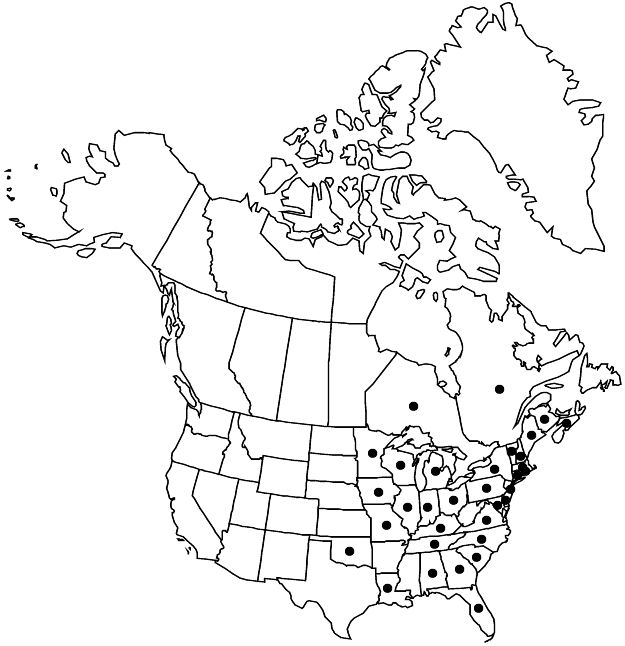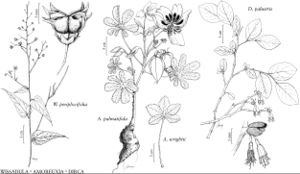Dirca palustris
Sp. Pl. 1: 358. 1753.
Shrubs to 3 m; branches turning gray, glabrous. Leaves: petiole 2–5 mm, glabrescent; blade obovate to ovate, 5–10 × 3.5–7 cm, base cuneate, apex acute or obtuse, surfaces usually glabrous, rarely with persistent indument. Inflorescences racemose, becoming pendent, (2–)3(–6)-flowered, pedunculate, flowers pedicellate; bracts elliptic, apex obtuse to acute, brown- to tan-pubescent, occasionally hoary; peduncles 5–13 mm. Pedicels 2–10 mm, glabrous. Flowers: calyx yellow-green, unlobed or 4–5-lobed, lobes to 1 mm, margins shallowly crenate, erose, or undulate; ovary glabrous. Drupes green or yellow, drying red, ovoid, 6–12 mm, glabrous. 2n = 18, 36.
Phenology: Flowering spring (Mar–May); fruiting summer (Jul–Aug).
Habitat: Rich, moist to wet, lowland woods, calcareous rich slopes, along braided streams, swamps
Elevation: 0–1500 m
Distribution

N.B., N.S., Ont., Que., Ala., Conn., Del., Fla., Ga., Ill., Ind., Iowa, Ky., La., Maine, Md., Mass., Mich., Minn., Mo., N.H., N.J., N.Y., N.C., Ohio, Okla., Pa., R.I., S.C., Tenn., Vt., Va., Wis.
Discussion
Peter Raven (pers. comm.) has reported that populations of Dirca palustris south of the last glacial advance are diploid and those north of it are tetraploid. It is suspected that pollen diameter (volume) may be a useful surrogate to predict ploidy level in D. palustris.
The bark of Dirca palustris is strong and pliable; it was once used in ropes and baskets. The plants may cause contact dermatitis. The fruits are mildly poisonous to mammals and have been used as purgatives and fish poisons. The plants, sometimes browsed by deer, are slow-growing in cultivation and prefer moist to wet soil. The leaves are sometimes parasitized by the miner Leucanthiza dircella Braun. Insect visitors to the flowers include species from five genera of generalist bees; the plants may be facultatively autogamous. Fruit dispersal may be by birds or small mammals.
The flowers appear in early spring before or as the leaves expand, after the flowers of red maple and before the canopy closes.
